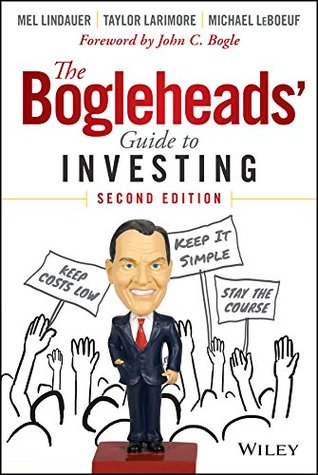More on this book
Community
Kindle Notes & Highlights
Today’s popular investment misconceptions—short-term focus and fast-paced trading, the conviction that exceptional past fund performance will recur, the ignorance of the importance of fund operating expenses, sales commissions, hidden portfolio turnover costs, and state and federal taxes—are anathema to them.
The Bogleheads’ Guide to Investing is both precisely accurate and grandly intuitive. “Choose a sound financial lifestyle. Start early and invest regularly. Know what you’re buying. Preserve your buying power. Keep costs and taxes low. Diversify your stock portfolio [and diversify your stock risk with a bond portfolio].” Investors who follow these simple tenets will earn their fair share of whatever returns the financial markets are kind enough to deliver in the years ahead.
What Jack Bogle has made possible for the individual investor is truly extraordinary. Thanks to his creation of no-load, low-cost, tax-efficient mutual funds, millions of investors enjoy significantly greater returns on their investment dollars than they otherwise would have. His introduction of the first index fund for retail investors was labeled Bogle’s Folly by its detractors. Today, that same fund, Vanguard’s 500 Index fund, is the largest mutual fund in the world.
category. Every three years the Federal Reserve surveys household net worth in the United States. The latest figures available are for 2010. At that time, the median family net worth in the United States (meaning half had less, half had more) was $77,300. As you might expect, odds favor the well educated and self-employed. Families headed by a college graduate had a median net worth of $195,200, compared to $56,700 for families headed by a high school graduate. And the self-employed enjoyed the highest median net worth of $285,600.


